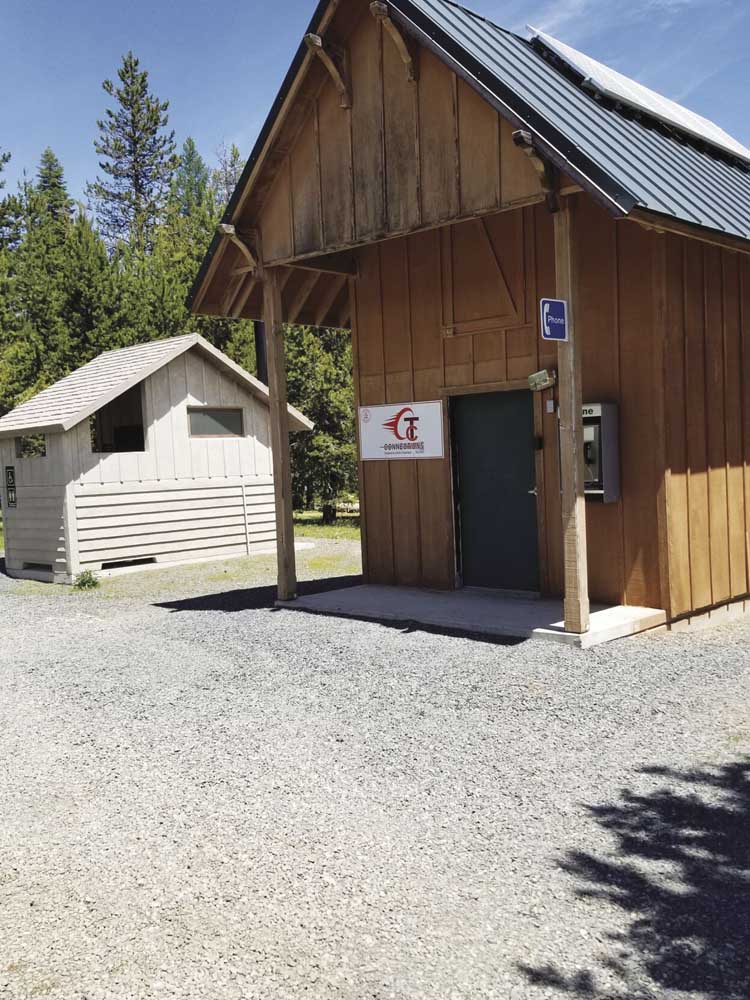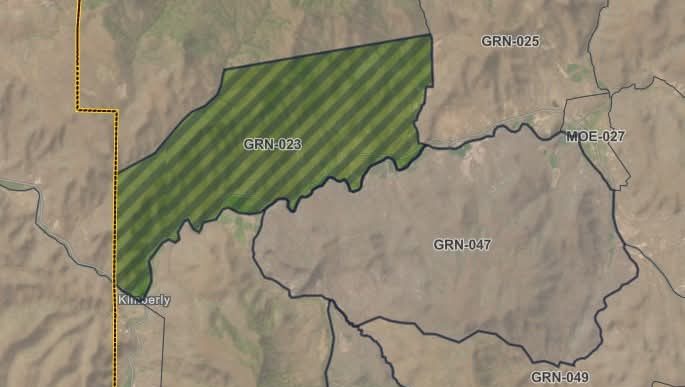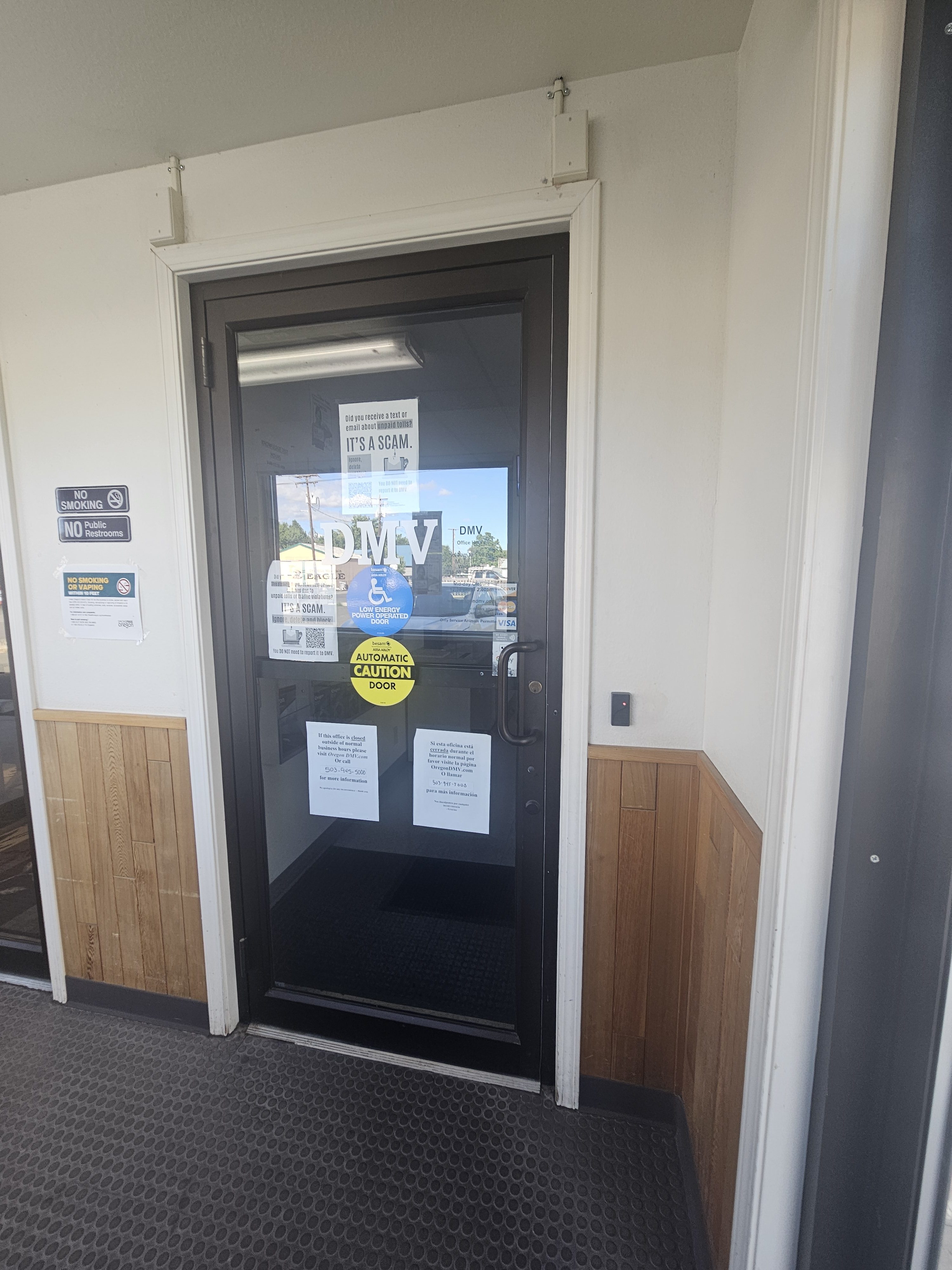Tiny town, big bucks
Published 2:30 pm Monday, November 8, 2021

- Phone service arrived in Greenhorn about 20 years ago, with equipment housed in the building at right. A public restroom is at left.
GREENHORN — Greenhorn has no year-round residents but it does have almost $86,000 to fix its streets.
Trending
Although those streets — about one mile in total — are buried under feet of snow about half the year.
Gravel streets, specifically — the nearest stretch of pavement to Greenhorn is Highway 7, several miles to the east.
Wintry impediments aside, the sudden influx of dollars for this unique incorporated city in Baker County is welcome, said Dennis Koellermeier, one of Greenhorn’s five appointed city councilors and, he says with a rueful chuckle, its mayor pro tem.
Trending
“No one else will volunteer,” said Kollermeier, who has owned property in Greenhorn for about 20 years.
Koellermeier, who also has a home in West Linn, said he and his wife are retired and spend six to eight months per year in Greenhorn.
He said they’re considering moving full-time into the cabin they’ve been working on for the past 15 years.
Koellermeier said a couple who had been living most of the year in Greenhorn, despite its being accessible by snowmobile during the winter and well into spring most years, has decided not to winter in the remote spot this year.
Although $85,900 wouldn’t make a massive difference in the street budget for even a city of modest size such as Baker City, for Greenhorn it’s an unprecedented sum, Koellermeier said.
“We’re kind of excited about it,” he said in a phone interview on Thursday, Nov. 4. “This is a big thing for us.”
Greenhorn collects no money from property taxes, although Baker County does get a share of the taxes its 30 or so property owners pay.
The city’s main revenue source is the yearly dues assessed to property owners, said Dale McLouth, a longtime Greenhorn property owner whose eight-year tenure as the city’s mayor ended Dec. 31, 2020.
Owners who have a cabin or other structure on their property pay $100 per year, and those without pay $50, McLouth said.
The dues — which were just $20 per year for all property owners as recently as 2008 or so — bring in about $2,500 per year.
With almost $86,000 now in its coffers, Greenhorn can make real progress, McLouth said.
“We have a lot of mud holes in our road system,” said McLouth, who lives in Molalla, a city in Clackamas County southeast of Portland.
Koellermeier said the city’s main goal is to spread gravel on the streets, replace old culverts and install new ones to reduce erosion. The dozen streets are already marked with signs that wouldn’t look out of place in a medium-sized city.
Koellermeier said he and other city officials have been talking with the Baker County Road Department about an intergovernmental agreement in which Greenhorn would hire the county, using the state grant, to do the street work.
The $85,900 was allocated to Greenhorn from the state’s Small City Allotment program, part of the Keep Oregon Moving transportation bill the Legislature approved in 2017.
Oregon officials announced the latest round of 53 small city grants, totaling $5.1 million, in late October.
The state received 92 applications totaling a little over $9 million, said Kris Strickler, director of the Oregon Department of Transportation (ODOT).
Other recipients in Northeastern Oregon:
• Halfway, $100,000
• Richland, $100,000
• Sumpter, $100,000
• Elgin, $100,000
• North Powder, $75,000
Koellermeier said an ODOT employee notified Greenhorn councilors about the grant program earlier this year.
The council put together the application and, “lo and behold, the state thought it was warranted,” Koellermeier said.
A ‘special city’McLouth describes Greenhorn as a “special city,” and his appellation is not without foundation.
Greenhorn is by a fair margin the farthest above sea level of any incorporated city in Oregon, at 6,300 feet.
The area was settled in the 1860s and, as with many other places in Baker County, the lure was gold.
Greenhorn was founded on the divide between the North Fork of the Burnt River and the North Fork of the John Day River. The divide also serves in this area as the boundary between Baker and Grant counties.
Most of the city, which covers 53 acres, lies within Baker County, and it is, for administrative and legal purposes, within the county.
That distinction occasionally affects the operations of Greenhorn, McLouth said — most recently in 2020.
Greenhorn’s city charter establishes a five-member city council, three of whom serve four-year terms, and two serving two-year terms.
Occasionally, McLouth said, the terms of all five councilors expire at the same time. When that happens, he said, the Baker County Board of Commissioners appoints three city councilors, and that trio then picks two others to join them.
To be eligible, councilors must own property within the city and live in Oregon, McLouth said.
(Several properties in Greenhorn are owned by people who live outside the state.)
Greenhorn is also notable for the way in which its boundaries were defined.
In 1912 President William Howard Taft issued a patent for the 53 acres to the city, making it unique in Oregon in that respect.
Although Greenhorn is isolated not only by its location but also by those prodigious winter snow depths, Koellermeier said the city, if never exactly bustling, can be somewhat lively, by ghost town standards, during the warmer months.
“It’s sort of a mecca for weekend drive-thru tourists,” he said.
Greenhorn also has a public outhouse, which is undoubtedly an attraction.
No power lines extend to Greenhorn; McLouth said property owners use generators to light their cabins.
An underground line brought landline phone service to Greenhorn about 20 years ago, but McLouth said most residents use cellphones, despite the somewhat spotty signal coverage.
“Most of us have a favorite spot outside our cabins to stand where we know we can get service,” he said with a laugh. “Or I can just go upstairs in my cabin and stand by the window.”
With money available to work on streets, Greenhorn should also be able to focus on its otherwise pressing infrastructure need, McLouth said — its water system.
The city taps a pair of springs in the mountains above town, but sections of the water supply lines are seven or eight decades old, and leaks have been more common, he said.
Greenhorn is the one-word derivation of a natural feature known, and aptly so, as the Green Horn.
That’s a pinnacle, not far west of town toward Vinegar Hill, that’s made of serpentinite, a distinctive, green-colored metamorphic rock.
Greenhorn is applied not only to the town, which had a post office from May 24, 1902, until Dec. 15, 1919, but to the subrange of the Blue Mountains that extends more than a dozen miles to the west, forming the divide between the Middle Fork of the John Day River to the south and the North Fork on the north.
“We’re kind of excited about it. This is a big thing for us.”
— Dennis Koellermeier, Greenhorn mayor pro-tem, talking about an $85,900 state grant to repair the city’s streets









